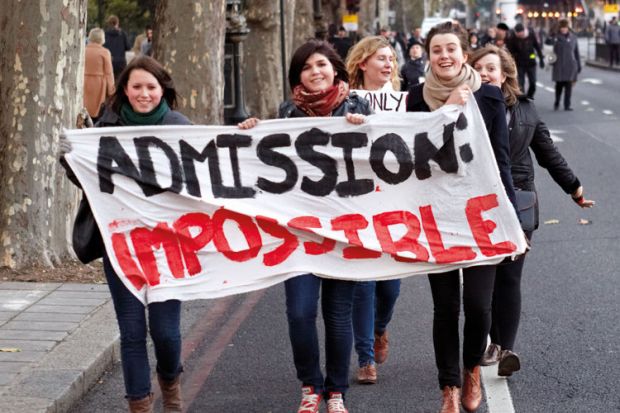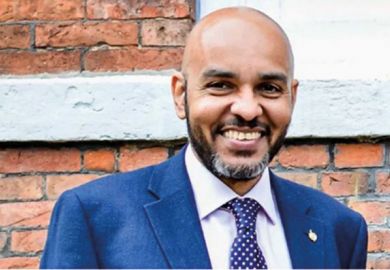Source: Alamy
The weight: those who carry large debts from undergraduate study may baulk at paying to continue at a higher level
Universities with strategies to increase the number of postgraduate research students could come unstuck if higher tuition fees squeeze out the self-funders who comprise more than a third of the market, the head of a postgraduate education body has warned.
Mick Fuller, chair of the UK Council for Graduate Education, said that institutions often see research student numbers as an “easy target” for expansion that can be measured and reported to vice-chancellors.
But the ability of self-funded research students to pay for these qualifications may be at risk in the years ahead, which could make maintaining or expanding numbers “difficult”, he said at a Westminster Higher Education Forum event on postgraduate research.
Professor Fuller, who was speaking the day after the government announced a state-backed loan scheme for postgraduate taught students, said that he welcomed with “open arms” action to help those wanting to pursue a master’s.
He said that numbers on research master’s, PhDs and professional doctorates had increased over the past 14 years. However, although numbers are likely to continue climbing, it was unlikely that they would increase significantly in the next few years, he told the event in London on 4 December.
Almost 40 per cent of research students are self-funded, according to data presented at the event. “This is the area that we will probably see shrink in the next few years,” he said, reasoning that students paying to gain a postgraduate research qualification will soon be carrying forward significant undergraduate debt.
“If you look at the research strategies on most university websites, they all predict growth in postgraduate research student numbers,” said Professor Fuller, who is head of Plymouth University’s Graduate School.
“It is a big indicator into our research excellence framework submissions; it goes hand in glove with research activity; and it looks like an easy target to measure for our vice-chancellors or senior executives to say that the numbers have gone up,” he added.
David Bogle, head of the graduate school at University College London, said that self-funders comprised 35 per cent of his research students but it was too early to say whether higher undergraduate tuition fees would affect their numbers. “The big crunch starts to come next year, and then we will start to see some things happen,” he said.
Professor Bogle said that it was unlikely that there would be an increase in public sector funding for these students but there could be a small rise from research charities.
“It is the private sector that we need to be looking at. They are certainly very keen to recruit our PhD graduates, so I would certainly like to see a bit more private sector investment,” he said.
Professor Fuller added that the market for postgraduates with funding from overseas, which currently makes up 7 per cent of all research students, will be an area for expansion. “There are big scholarship schemes out there from certain countries, and they want to still come to the UK,” he said.
But he stressed that competition for these students will grow in the next 10 to 20 years. He had recently heard of a new graduate school in China that has 40,000 research students, with 25,000 doing PhDs, he said. “That is part of the international competition facing us.”
Register to continue
Why register?
- Registration is free and only takes a moment
- Once registered, you can read 3 articles a month
- Sign up for our newsletter
Subscribe
Or subscribe for unlimited access to:
- Unlimited access to news, views, insights & reviews
- Digital editions
- Digital access to THE’s university and college rankings analysis
Already registered or a current subscriber? Login





